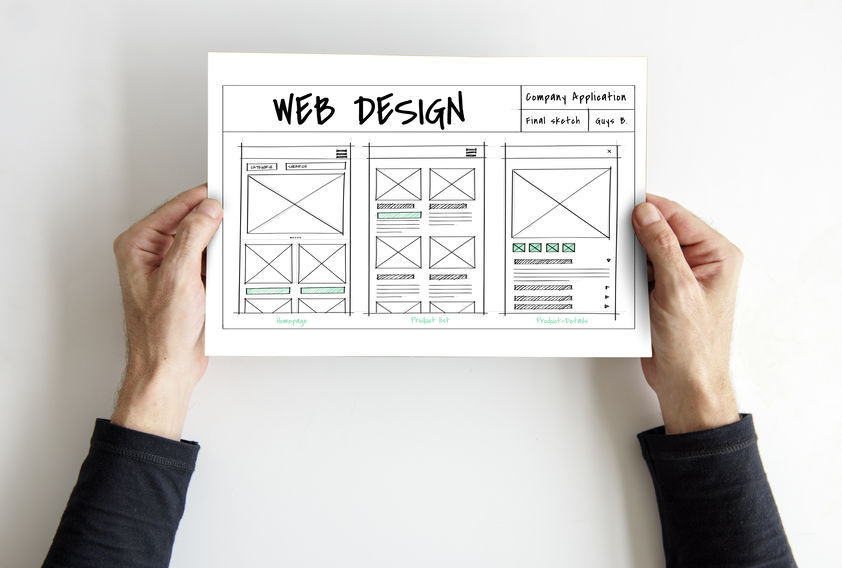Web Design Do's and Don'ts: A Comprehensive Guide for Singapore Businesses 2023
20 March 2023

In today's digitally-driven Singapore, a well-designed website is crucial for your business to thrive. An aesthetically pleasing and functional website helps attract visitors, enhances your online presence, and ultimately drives conversions. As a Singapore-based web design agency, we appreciate the importance of striking the perfect balance between visual appeal and usability. In this article, we will discuss essential web design do's and don'ts that will help you create a highly effective website for your business.
Do's:
- Prioritize Responsive Design
Do ensure your website is mobile-friendly with responsive design. With the increasing number of mobile users in Singapore, it's vital to make sure your site looks and performs well on all devices. Responsive design adapts the layout, images, and navigation to fit different screen sizes, providing a seamless experience for users across various devices.
Example: The Straits Times (www.straitstimes.com) has a responsive design that adjusts its layout and navigation based on the user's device, ensuring a consistent and user-friendly experience.
- Focus on User Experience (UX)
Do prioritise user experience in every aspect of your site's design. A well-thought-out UX can significantly boost engagement, reduce bounce rates, and improve conversions. To enhance UX, consider factors like load times, easy navigation, clear call-to-action (CTA) buttons, and intuitive design.
Example: DBS Bank Singapore (www.dbs.com.sg) offers a user-friendly website with easy navigation, fast load times, and prominent CTA buttons, resulting in an enhanced user experience.
- Utilize White Space
Do leverage white space to create a clean and organised look. White space, or negative space, is the unoccupied area between design elements. It helps declutter your layout, making it easier for users to focus on essential content and navigate your website.
Example: Apple Singapore (www.apple.com/sg) effectively uses white space to create a clean, minimalist design that highlights key products and information without overwhelming users.
- Optimize for SEO
Do optimise your website for search engines, keeping in mind local Singapore searches. Implement on-page SEO best practices like keyword optimisation, title tags, meta descriptions, and header tags. This will improve your website's visibility on search engines and increase organic traffic from your target audience in Singapore.
Example: Qoo10 Singapore (www.qoo10.sg) is an e-commerce website that has successfully implemented SEO best practices, making it highly visible in search engine results for relevant local searches.
- Implement Clear Call-to-Action (CTA) Buttons
Do include clear and compelling CTAs that guide users towards desired actions. Whether you want them to make a purchase, sign up for a newsletter, or request a quote, your CTAs should stand out and be easily accessible.
Example: Grab Singapore (www.grab.com/sg) features clear and prominent CTA buttons on its homepage, guiding users to download the app or explore their services.
Don'ts:
- Ignore Load Times
Don't overlook the importance of fast-loading pages. Slow-loading websites frustrate users and can lead to higher bounce rates. Optimise your site's load times by compressing images, utilising browser caching, and minimising HTTP requests.
- Overload with Content
Don't clutter your website with too much information, images, or animations. Excessive content can be overwhelming and confusing for users. Focus on creating clear, concise, and engaging content that effectively communicates your message.
- Rely on Outdated Design Trends
Don't use outdated design trends that may harm your site's usability or appearance. Stay up-to-date with the latest web design trends and best practices. Continuously update and improve your site's design to maintain a modern and professional look.
- Neglect Accessibility
Don't forget to make your website accessible for all users, including those with disabilities. Accessibility is not only a moral responsibility but also a legal requirement in many cases. Implement accessibility best practices like adding alt text for images, using proper heading structure, and ensuring proper color contrast.
- Underestimate the Power of Visual Hierarchy
Don't disregard the importance of visual hierarchy. A well-structured visual hierarchy guides users through your content and helps them easily find what they're looking for. Use elements like size, color, and contrast to create a clear hierarchy and improve user experience.
Conclusion:
In the competitive online landscape, businesses must prioritize their website's design and user experience. By following these web design do's and don'ts, you can create a website that not only looks great but also effectively engages users and drives conversions. If you're looking to create or revamp your website with the expert guidance of a Singapore-based web design agency, don't hesitate to reach out to us. Our experienced team is ready to help you achieve an exceptional online presence that drives success.
Contact us today for a consultation!










